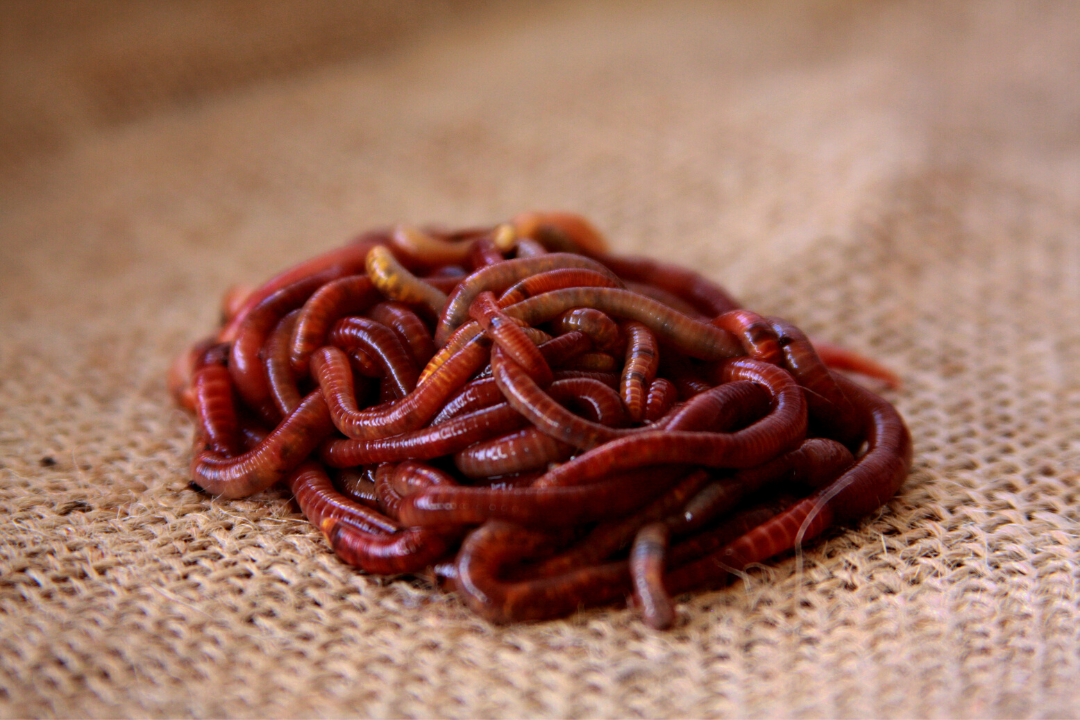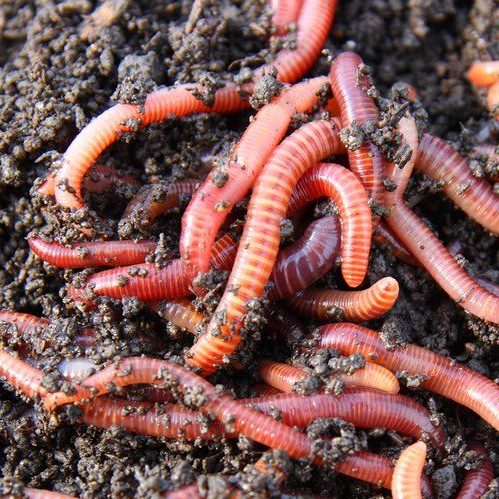Red Wigglers: The Unsung Heroes of Organic Waste Recycling
Red wigglers, or Eisenia fetida, act as vital representatives in the natural waste recycling procedure, changing discarded products right into valuable vermicompost. Their effective failure of raw material not only boosts dirt quality but likewise contributes to lasting waste management practices. As the globe significantly seeks options to fight waste build-up and boost agricultural productivity, understanding the duty of these worms becomes necessary. What devices enable them to thrive in garden compost environments, and how can they be properly used in both property and industrial settings? Discovering these concerns discloses the broader ramifications of vermicomposting in our ecological landscape.
What Are Red Wigglers?
The amazing strength of red wigglers, clinically referred to as Eisenia fetida, emphasizes their essential duty in organic waste recycling. These little, reddish-brown earthworms are typically located in decaying raw material, such as compost heap and manure loads. Lake Hickory Bait. Unlike other earthworm varieties, red wigglers prosper in nutrient-rich atmospheres and are extremely effective at damaging down natural products, making them crucial for vermicomposting

(Lake Hickory Bait)In addition to their function in waste decrease, red wigglers add to soil health by enhancing dirt framework and aeration via their delving tasks (Lake Hickory Bait). Their existence in composting systems not only enhances decay prices but additionally promotes a lasting approach to squander monitoring, showing their importance in environmental preservation efforts
Benefits of Composting With Worms
Composting with worms, particularly red wigglers, offers countless benefits that boost both waste administration and soil wellness. These worms efficiently damage down organic waste, converting it into nutrient-rich vermicompost that improves soil. This process speeds up decay, enabling a faster recycling of kitchen scraps and various other natural products compared to traditional composting techniques.
Furthermore, the vermicompost produced by red wigglers is brimming with advantageous microbes, which assist improve dirt structure, oygenation, and wetness retention. This improves the total health and wellness of plants, advertising strenuous development and raised returns in yards and farming setups. In addition, the usage of worms in composting lessens the production of greenhouse gases, such as methane, adding to a more sustainable waste administration system.

Exactly How to Start Vermicomposting
Developing a vermicomposting system is a simple process that can produce significant benefits for both waste management and soil enrichment. To begin, pick a suitable container, such as a plastic bin or wood box, with ample ventilation holes to ensure appropriate air flow. The measurements need to ideally be about 2 feet by 3 feet, allowing enough room for the worms to grow.
Following, prepare bed linen product, which can contain shredded newspaper, cardboard, or coconut coir. This bed linen must be dampened to create an ideal habitat for the worms. When the bedding is in location, present red wigglers (Eisenia fetida) right into the container, typically around one pound of worms for every single square foot of surface.
Complying with the positioning of worms, add natural waste, such as vegetables and fruit scraps, coffee premises, and smashed eggshells. Avoid including dairy products, meat, or oils, as these can develop smells and draw in pests. Position the container in a shaded, temperature-controlled area to keep ideal problems for worm task. With these steps, you will efficiently launch a vermicomposting system that adds to lasting waste monitoring and improves your soil.
Preserving a Healthy And Balanced Worm Container
(Red Wiggler Express)Keeping a worm container prospering calls for regular attention and like ensure the wellness of the red wigglers and the efficiency of the composting procedure. Appropriate upkeep begins with monitoring the moisture levels; the bin ought to perspire yet not waterlogged. An excellent guideline is to maintain an uniformity comparable to a wrung-out sponge.
Aeration is essential. Gently blending the bed linen and food scraps every few weeks prevents compaction and guarantees that all worms have access to oxygen. Furthermore, it is necessary to feed the worms properly. A well balanced diet plan of fruit and veggie scraps, coffee premises, and crushed eggshells should be used in moderation to prevent overfeeding, which can bring about smells and bugs.
Temperature level law is an additional important element. Red wigglers prosper in a series of 55 to 77 degrees Fahrenheit. If the bin becomes also hot or chilly, the worms may come to be stressed - Lake Hickory Bait. Periodically check for indications of wellness, such as worm population development and the visibility of healthy spreadings. By faithfully handling these elements, one can maintain a robust and effective worm container.
Effect On Lasting Living
The effective maintenance of a worm container not just profits the health of red wigglers but additionally contributes substantially to sustainable living methods. By reusing natural waste, such as kitchen area scraps and lawn particles, red wigglers help draw away considerable amounts of product from garbage dumps. This decrease in waste not only lowers greenhouse gas exhausts but additionally decreases the ecological burden connected with waste administration.
In addition, the spreadings produced by red wigglers act as a nutrient-rich organic fertilizer, boosting soil wellness and promoting plant development. This all-natural choice to chemical plant foods sustains sustainable agriculture and horticulture practices, lowering reliance on synthetic inputs that can hurt ecosystems. In addition, worm composting cultivates recognition of waste management, encouraging people and neighborhoods to embrace more sustainable practices.

Final Thought
In recap, red wigglers function as important factors to natural waste recycling through their efficient decay of organic materials. Their ability to generate nutrient-rich vermicompost improves dirt wellness and supports sustainable farming techniques. By integrating vermicomposting into waste monitoring strategies, people and areas can significantly minimize waste while advertising environmental sustainability. The role of Eisenia fetida in promoting healthy and balanced environments emphasizes the relevance of these microorganisms in basics accomplishing lasting living and improving soil fertility.